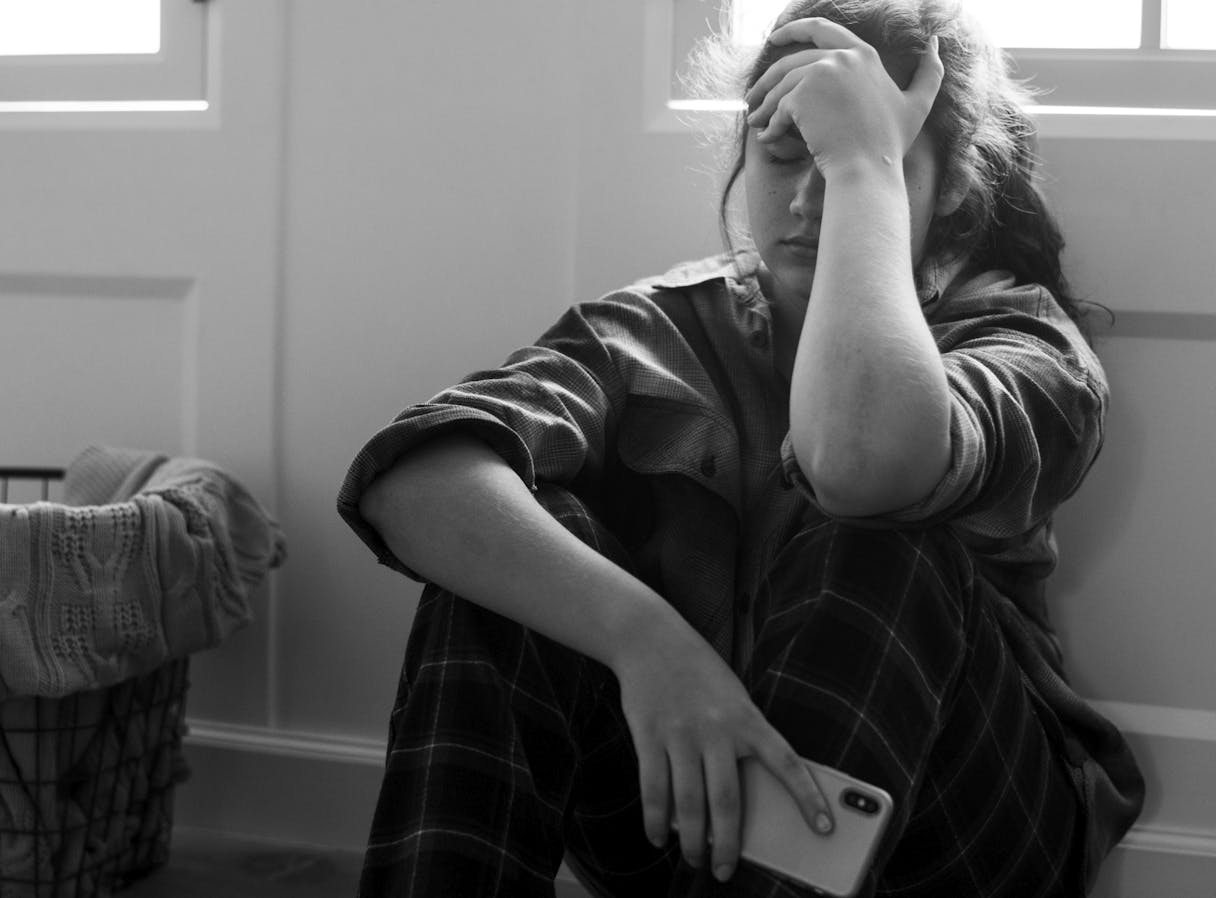Managing depression alone can be difficult. Find a therapist, prescriber, or both who meets your needs. Learn more
Remember when working from home was a rare perk for lucky people? Ah, the good old days, when it was a fantasy to be able to roll out of bed at 8:59 AM, work in your sweats, and then log off right at 4:59 PM to hang out with your family.
But if you have the ability to “WFH,” it’s been over a year since you were likely sent home to work for the “next two weeks.” Now, working from home may not only have lost some of its luster, it might be straining your mental health.
If you’re feeling burnout, anxiety, or depression from all those hours working from home, here are some considerations for caring for your mental health.
WFH Is Probably Here to Stay
According to a Pew Research survey, before the pandemic, only 1 in 5 people reported that they worked from home. Now, 71% of those workers work remotely. And over half of them said that, given a choice, they’d want to keep working from home even after the pandemic. There’s also some evidence that, for certain jobs, having the option to work from home can increase productivity and quality.
WFH seemed temporary at first, but it’s looking like it’s here to stay. As offices go fully or at least partially remote, it’s more important than ever to make sure you have solid habits to protect your mental health.
How WFH Can Affect Your Mental Health
Working from home is great in lots of ways. Your schedule is flexible, you don’t have to deal with traffic or public transit, and you don’t have to stick to a strict dress code.
But WFH full-time still comes with its own set of challenges, like:
Becoming isolated and lonely (especially when living alone)
WFH is pretty much a solo activity, but even the most introverted person still needs human interaction. If you live alone, working from home means full days could go by without speaking to anyone face to face.
A study has shown that social isolation is just as harmful to physical health as smoking 15 cigarettes a day, and is twice as harmful to mental health as obesity.
If you’ve been diagnosed with depression and/or anxiety, isolation can make your symptoms even worse.
Having poor work-life balance and burning out
When the lines between home and work blur, it can be hard to maintain a healthy work-life balance.
You may find yourself working long hours or answering emails late at night, which can lead to unhealthy sleep habits or even insomnia.
Without a healthy work-life balance, you might burn out, and your performance could suffer.
Feeling a lack of motivation
According to Pew Research, 53% of workers between the ages of 18-29 said lack of motivation was a huge challenge while WFH during the pandemic.
When you don’t feel motivated to work, you could start to miss deadlines, procrastinate your tasks, or let important projects slide. Before you know it, your job could be at risk.
WFH Mental Health Tips
Tip #1 Keep your workspace separate and organized
Keeping your desk clean and having a dedicated work space can help keep you motivated and focused during the workday.
You might not have the room to have a completely separate office, but there are still ways you can have a dedicated space to work. Some tips include:
Buy a sturdy desk and desk chair. A good desk and chair are important when you work from home. The setup doesn’t have to be fancy, but it should be comfortable enough for you to spend hours in the same place.
Choose a specific place in your home or apartment dedicated only to work. If you live in a studio or can only work out of your bedroom or living room, pick an area to set up your desk and only use it to get your work done. Take breaks from work away from that space. Your brain will eventually make the connection, and every time you sit down in that corner, you’ll feel ready to be productive.
Try noise-canceling headphones to help you feel less distracted. These are very helpful when you live with children or roommates. There are many affordable options, and they’ll keep you focused on the task at hand.
Tip #2 Set boundaries with your work schedule
If you’re having motivation problems, try creating a regular work schedule. Coming up with a plan and sticking to it helps you focus on the tasks at hand.
Some tips on setting up a healthy work schedule include:
Define the hours you want to dedicate to work and pick a time to stop working so you can focus on your personal life. Being disciplined with yourself and the schedule you create can allow you to get more done during the day. This means you can have more time for yourself in the evenings.
Figure out your distractions and find a way to avoid or get rid of them. For example, if you find yourself texting or staring at TikTok for hours when you want to avoid work, try using Do Not Disturb mode. Or, put your phone in another room. If you find yourself walking over to that room to use your phone, ask your roommate or family member to keep it from you until you’ve finished what you’re working on.
Take an actual break and leave your desk for a bit. Sometimes your brain is completely fried, and you feel like you can’t work any longer. When that happens, give yourself a break and go eat lunch or take a walk. This will help you recharge and feel refreshed.
Tip #3 Focus on self-care
You can’t work well if you don’t feel good about yourself. And, it’s hard to feel good about yourself when you’re not prioritizing self-care.
Staring at your screen for hours and wearing the same clothes every day can easily make you forget that you have to take care of yourself before anything else.
Some great ways to include self-care every day include:
Take time to exercise and stay active. Take at least 10 minutes of your day to get your body moving. You can do a quick walk or a short Youtube workout. You’ll feel refreshed and ready to take on the rest of your day.
Put yourself together and get ready for work every day. Getting ready in the morning as if you’re going into the office can help you get in the right mindset for work. This works even if you’re not planning on leaving your house that day.
Dedicate some time for yourself every day. Pick a time during the day where you can get some me-time in. Try meditation, yoga, journaling, reading, or doing anything that allows you to spend time with yourself without getting distracted.
Tip #4 Make regular appointments with your therapist
If self-care isn’t working for you, we encourage you to seek the support you need. Feeling hopeless, having difficulty concentrating, experiencing prolonged periods of insomnia – these are all symptoms of depression and anxiety that can prevent you from leading a full life.
If you talk to your therapist regularly, they can work with you to help you deal with any symptoms of depression and anxiety that you’re experiencing.
If your symptoms are at the point where it's hard for you to function throughout the day, then it may be time to see a physician or someone on your care team.
Unfortunately, mental healthcare can be hard to pay for and access. Finding a good therapist during a pandemic can feel impossible. Luckily, Cerebral makes mental health treatment both accessible and affordable.
Our online therapy plans include regular assessments, video/phone appointments, regular therapist sessions, and medication delivery (if prescribed), all in the price of your subscription.
We believe that everyone deserves access to personalized, non-judgmental mental health care. If you haven't found yours yet, start today!
Medically reviewed by: David Mou, MD, MBA

How Connecting with Nature Benefits Our Mental Health

Addressing Suicidal Thoughts: A Guide for Suicide Prevention

What a Manic Episode Feels Like

If you’re having a mental
health emergency
If you're in emotional distress and
need immediate support
For National Suicide
Prevention Hotline
